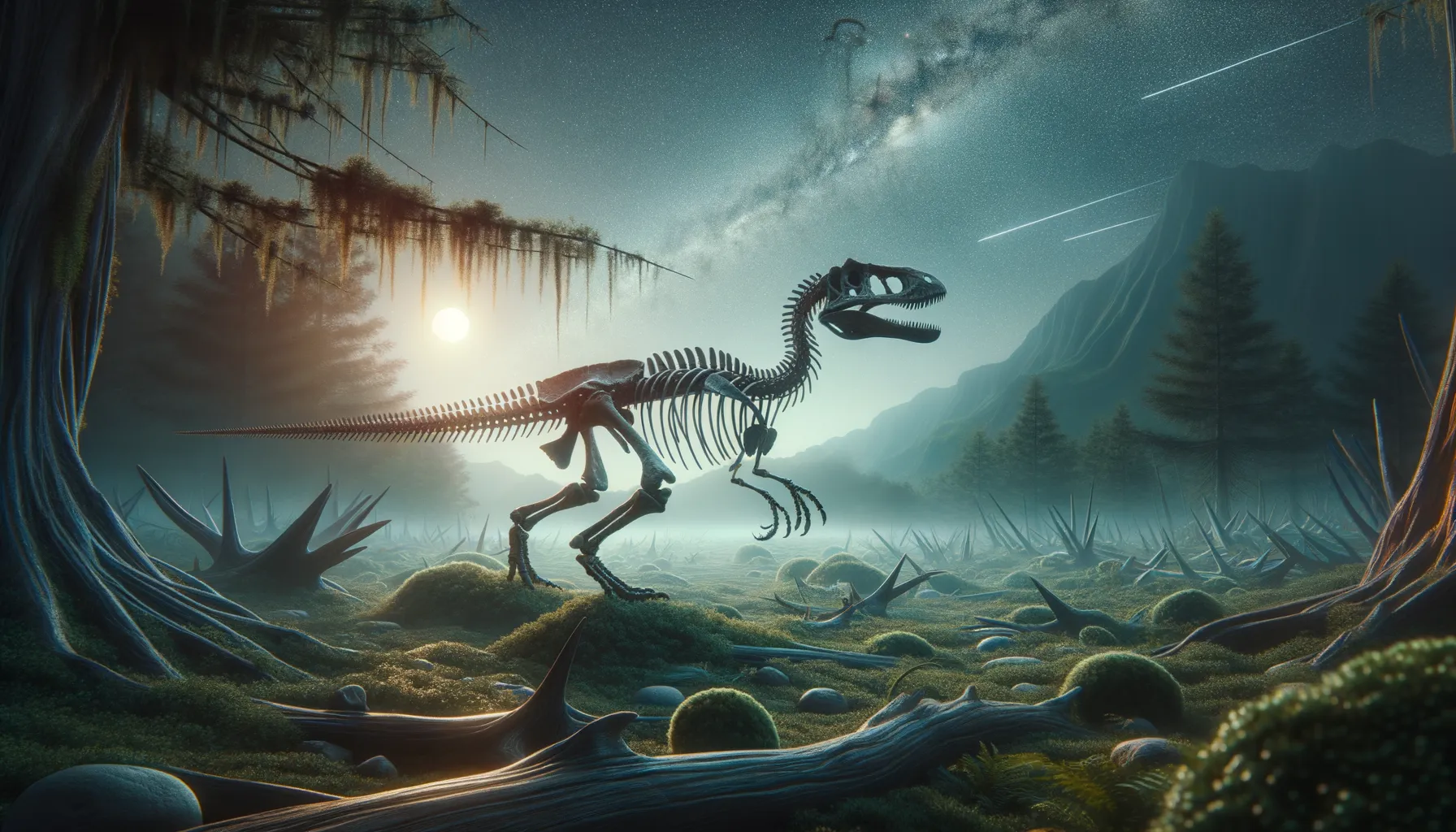
Hallopus
Agile strides in prehistoric tales!
Period
Jurassic
Length
About 1 meter in length.
Height
Approximately 50 centimeters tall.
Weight
Estimated to weigh around 10 kilograms.
Hallopus was a small, agile dinosaur that roamed during the Jurassic period. Its unique skeletal structure suggests it may have been capable of swift movements, possibly similar to modern reptiles. Discovered in the late 19th century, its fossils have provided insights into the variety of creatures that inhabited prehistoric landscapes. Hallopus is an intriguing subject of study due to its distinct adaptations and potential behaviors.
Diet
Hallopus is believed to have been a carnivore, feeding primarily on small animals. Its diet likely included insects, small reptiles, and possibly eggs, which were abundant in its habitat.
Hunting
As a swift predator, Hallopus would have relied on its agility to catch prey. Its keen senses would have helped it detect and ambush small creatures, using speed to its advantage in short chases.
Environmental challenges
Hallopus faced challenges such as competition for food with other small carnivores and potential predation by larger dinosaurs. The changing climate of the Jurassic period would have also influenced its hunting and survival strategies. Adapting to these challenges was crucial for its survival in the dynamic ecosystems of its time.
Speed
It was likely agile and swift in movement.
Lifespan
Believed to have lived up to a decade.
First discovery
Discovered in the Late 19th century by Othniel C. Marsh.
Fun Facts
- Hallopus was a small, fast-moving dinosaur that lived during the late Jurassic period.
- Unlike many dinosaurs, Hallopus likely walked on two legs like a bird or a kangaroo.
- It has been found mostly in what is now the United States, particularly in parts of Colorado.
- Hallopus was not very large, measuring about the size of a small dog.
- This dinosaur was an early type of crocodylomorph, which means it was related to modern crocodiles even though it looked quite different.
- Its name means 'leaping foot', referencing its likely ability to move quickly and perhaps jump.
- Fossil evidence of Hallopus is relatively rare, making each discovery valuable for understanding its lifestyle.
Growth and Development
Hallopus likely went through rapid growth phases to reach maturity quickly, a common trait in small dinosaurs. Its development was influenced by environmental factors, such as food availability and seasonal changes. Hallopus's skeletal structure indicates it may have adapted developmental features to enhance its agility and survivability.
Habitat
Hallopus inhabited forested and semi-arid regions, with abundant underbrush and small prey. Its environment would have been warm, with varying degrees of vegetation offering shelter and hunting grounds. The habitats were diverse, providing a mix of opportunities and challenges for survival.
Interaction with other species
Hallopus likely interacted with other small dinosaurs and possibly early mammals. Competition would have been high for both food and territory, necessitating quick and agile maneuvers. Interactions may have also included evasion tactics from larger predators in shared ecosystems.
Natural lifespan
Hallopus had a relatively short natural lifespan, potentially around a decade.
Reproduction
Reproduction for Hallopus likely involved laying small clutches of eggs in concealed nests. Parental care might have existed to some extent, protecting the eggs from predators. These reproductive strategies helped maximize survival chances for the offspring.
Social behaviour
Hallopus may have displayed solitary behaviors, focusing on individual survival and hunting strategies. However, encounters with other members of the same species could involve competition for resources. Social interactions were likely minimal beyond mating and territorial disputes.
Fossil locations
Fossils of Hallopus have mainly been found in North America, specifically from the Morrison Formation. These fossils provide critical insights into its existence during the Late Jurassic. The discoveries have been instrumental in understanding the diversity and adaptation of small dinosaurs in prehistoric ecosystems.
